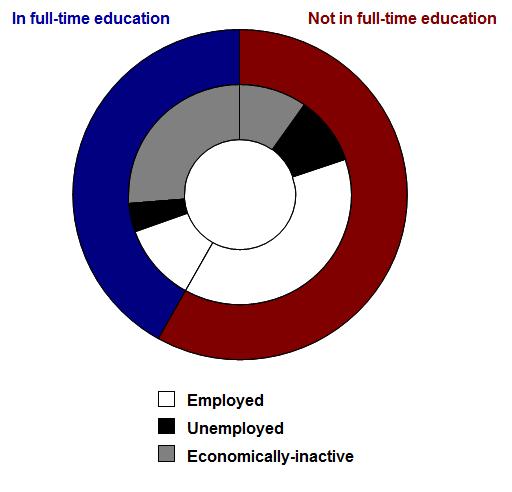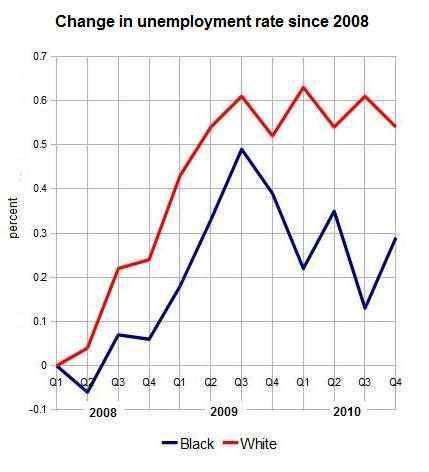Are 44 per cent of young black people unemployed?
"Young, black and unemployed: the tragedy of the 44%...
Nearly half Britain's young black people are jobless. We've created an inequality timebomb."
Diane Abbott, The Guardian, 5 March 2012
In Monday's Guardian the Labour MP Diane Abbott spoke of an 'inequality timebomb'. She claimed that 44 per cent of young black people were unemployed - over twice the rate of their white counterparts, among whom 20 per cent are jobless.
She also spoke of black people being hit hardest by spiralling unemployment, and that the recession has hit ethnic minorities 'disproportionately hard'.
Full Fact decided to investigate the claims.
Analysis
The Office for National Statistics (ONS) do provide some data on unemployment by ethnicity, last updated a year ago. However, the dataset did not provide a breakdown by age, and instead indicated that the rate among all black people ranged from 15 to 17 per cent depending on specific ethnicity.
After contacting the ONS, they provided Full Fact with more estimates produced from the Labour Force Survey which outline the estimated rates, by ethnicity, specifically for 16-24 year-olds.
The results are graphed below. The most recent estimates indicate that, among young black people, 47.4 per cent are unemployed. This is compared to 20.8 per cent for white, 22.4 per cent for mixed, 26.7 per cent for Asian and 28.1 per cent for all others.

So the initial evidence suggests Ms Abbott may even be marginally understating her case.
However, while this rate represents the official definition shared by the International Labour Organisation (ILO), the ONS also point out in their YouTube video explanation that young people in full-time education can alter the statistics.
Channel 4 FactCheck also commented on this caveat yesterday, stating:
"Students are counted as "economically inactive" and so they push up the unemployment rate hugely."
This is, however, imprecise. Of the 7.3 million people aged 16-24 in the UK, around 3.05 million are in full-time education. Of these, 27 per cent are employed (part-time), 10 per cent are unemployed (seeking part-time) and 63 per cent are 'economically inactive' (they are outside the labour market by virtue of not actively seeking work).
Hence, not all students are counted as economically inactive, and instead are counted based on the individual circumstances of whether they are also in work or actively looking for work or not.
The chart below illustrates the employment, unemployment and inactivity rates for those in full-time education and those not, to illustrate this further:

As Full Fact has discussed before, the unemployment rate concerns only those who are economically active (the white and black areas of the chart). The grey areas represent those who are inactive. If a student is in or actively seeking part-time employment, they count as economically active.
Diane Abbott's measure is to include all young people - students and non-students - but exclude those who are economically inactive. This is then examined by ethnicity, and is a legitimate and official way of measuring the unemployment rate.
In spite of this, the ONS recognises that there is a public interest in choosing to measure unemployment by excluding those in full-time education.
Excluding those in full-time education pushes the unemployment rate up partly because far fewer people in the sample count as inactive, and among those not in full-time education, the unemployment rate is higher anyway.
So Ms Abbott's comments are not inaccurate but there is a bigger picture when students are factored out of the calculations, meaning the unemployment rate excluding students will be lower.
The ONS will provide Full Fact with estimates on how this affects the black unemployment rate in due course.
Have ethnic minorities been hit 'disproportionately hard'?
To determine whether the recession hit ethnic minorities 'disproportionately hard' is less easy to infer from these statistics alone.
While the ONS commented that the rate for young black people has remained roughly double that of young white people, what the data does show us is that, since 2008, the youth unemployment rate for black people has risen by 69 per cent. The same rate for young white people has risen by 39 per cent.
Takin these rates from before 2008 shows a smaller difference, but still a greater rise for the black ethnic group.
Further data from the ONS, which considers all ages, shows a slightly different picture still. Since the start of 2008, while the unemployment rate for black people remains higher than that for white people, the growth in the rate has been marginally steeper among the latter group.
The graph below, using the start of 2008 as a base, charts the indexed growth in the rate among both ethnic groups:

Of course, being 'hit' by the recession boils down to more than just unemployment, however the figures do indicate differing patterns depending on the age range we look at.
Conclusion
Diane Abbott's point about the high rate of unemployment among young black people is correct, although her 44 per cent figure appears slightly conservative going by the latest figures.
However there is far more to the statistics for young people than the official rate, as factoring out students and/or those who are economically inactive demonstrates that these groups of people alter the picture.
Whether or not young black people and ethnic minorities have been hit hardest by the recession is more open to interpretation. Among 16 to 24 year-olds, the evidence suggests that Ms Abbott's point can be borne out in terms of the rise each ethnicity has seen - although this depends on the point from which you measure the rise.